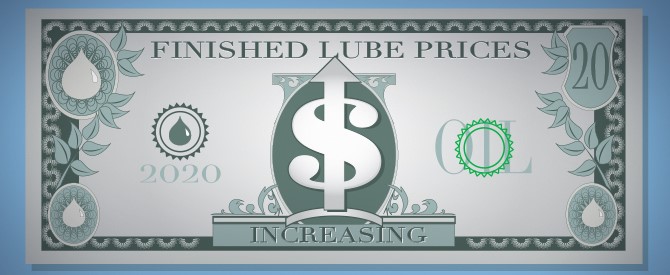
Shell, ExxonMobil, Chevron, Phillips 66 and several smaller blenders notified United States customers of impending finished lubricant price increases that take effect from mid-February through mid-March. Some companies cited increasing costs for raw materials used in production and delivery of their products.
Major oil companies have announced increases of up to 12 percent, most taking effect on Feb. 24, including:
- Shell on all of its finished lubricants;
- ExxonMobil on all of its finished lubricants;
- Chevron on all of its lubricating oils and greases;
- Phillips 66, effective March 2, on all of its finished lubricants.
Among smaller blenders, Chemlube announced it would raise prices 7 to 10 percent on finished lubes effective Feb. 13. Omni Specialty Packaging announced a price increase of 8 to 10 percent on both bulk products and packaged goods effective March 1, citing continued increases in base oils, additives, resin and freight costs. Warren Oil notified customers of price increases of up to 30 cents per gallon on finished lubricants and up to 4 cents per pound on greases effective March 19, specifically citing recent increases in base oil prices as the key reason.
Industry sources also reported that several other blenders – including Total, Advanced Lubrication Specialties, Amalie Oil, Old World (Peak) and Smitty’s Supply – also announced increases to their customers, most ranging up to 12 percent, effective on various dates in February.
Suzan Jagger, president of Jagger Advisory, noted that typically, oil companies push through a mass price increase at the beginning of each year, reflecting their views on base oil price forecasts. In early 2018, for example, a round of U.S. finished lube price hikes occurred that also took effect from late February through March.
“The announced 10 to 12 percent increases are steeper than that normal cycle, reflecting base oil cost projections as well as economic tailwinds from a good economy and the desire of marketers to recover some margin from the last two to three years of cost spikes,” Jagger told Lube Report.
She explained that the average cost of passenger car motor oil and heavy-duty motor oil additive packages has been flat to declining over recent years. “Growth of premium lubricant demand and higher additive treat rates to meet the latest original equipment manufacturer specifications have been offset by global oversupply as additive companies invest in Asia-Pacific capacity,” Jagger noted.
“U.S. marketers have taken advantage of this through aggressive tenders and contract terms,” she said. “History shows that marketers never keep all of these gains… giving back a portion to the market through discounts, rebates and special pricing offers to distributors and trade customers. It remains to be seen how much of the 2020 gains will hold when the market is flat and independent, private label, distributor and genuine oils continue to fight for a larger piece of the pie.”
The last major round of U.S. finished lube price increases took effect last May. Since that time, for the most part both finished lube prices and posted base oil prices had shown little change in the United States.
Base oil consumers enjoyed a surprisingly long period of stable base stock postings in 2019. With the exception of a couple of price initiatives by two producers last July and September, which did not get traction due to oversupply conditions and were later rescinded, paraffinic base oil producers maintained their posted prices from May through the end of the year, and naphthenic suppliers since June.
However, spikes in crude oil prices in December, which were caused by geopolitical tensions and economic indicators, offset some of the downward pressure exerted by the ample supply of base oils. This factor, together with prospects of a tightening market on the eve of the busy spring season and upcoming plant turnarounds, prompted paraffinic base oil suppliers to seek price increases this month.
The base oil markups, in turn, triggered the price hikes in downstream lubricant and additive segments.
Gabriela Wheeler contributed to this article.